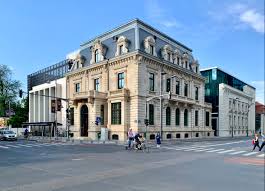
Introduction to Bucharest
Bucharest, the capital of Romania, is a city steeped in history and culture. As the largest city in Romania, it plays a pivotal role not only in the political landscape of the country but also as a center of cultural and economic activities. Its unique blend of historical architecture, modern developments, and vibrant nightlife has made Bucharest a growing destination for tourists and expats alike.
A Glimpse into the City’s History
The city’s history dates back to at least the 15th century, when it became the residence of Prince Vlad the Impaler, who is often associated with the Dracula legend. Over the centuries, Bucharest has witnessed various influences, including Ottoman, French, and Soviet, which have all contributed to its architectural diversity. Notable historical landmarks include the Palace of the Parliament, one of the largest administrative buildings in the world, and the historic Lipscani district, known for its charming streets and old-world vibe.
Cultural Significance and Attractions
Today, Bucharest stands as a testament to the resilience and evolution of Romanian culture. The city’s museums reflect its rich history, with the National Museum of Romanian History and the Museum of the Romanian Peasant offering deep insights into the nation’s past. The Romanian Athenaeum, a concert hall, is not only a architectural gem but also a central hub for classical music enthusiasts.
In recent years, Bucharest has seen a revitalization in its cultural scene. Festivals like the George Enescu Festival and the Bucharest International Film Festival attract thousands and highlight the city’s growing influence in arts. Moreover, the city is increasingly recognized for its culinary diversity, with a thriving restaurant scene that showcases both traditional Romanian dishes and international cuisine.
The Modern Side of Bucharest
Bucharest is also embracing modernization, with many initiatives aimed at improving urban living. Green spaces, such as Herăstrău Park and the recently redeveloped Mihai Voda Park, offer locals and tourists alike a respite from the bustling city life. Additionally, ongoing infrastructure projects aim to enhance connectivity and promote eco-friendly transportation.
Conclusion: The Future of Bucharest
As Bucharest continues to develop into a modern metropolis while preserving its historical roots, it stands out as a city poised for growth in tourism, business, and culture. Projections indicate that by 2025, Bucharest will attract even more international visitors as it uncovers more of its hidden gems and strengthens its position on the cultural map of Europe. For those seeking to explore a city where tradition meets modernity, Bucharest truly presents an intriguing destination.



